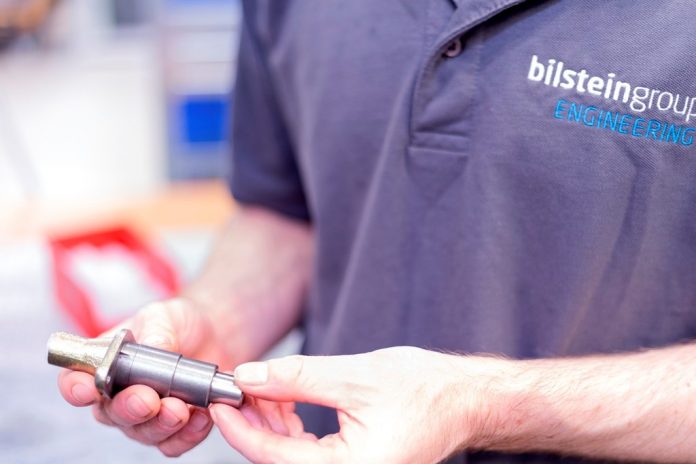Timing chains must be tensioned in all operating conditions. This must be the case even if a certain degree of elongation caused by wear has occurred during motor operation. The chain tensioner performs this crucial task. The quality of the component is of enormous importance. This is why chain tensioners from febi are manufactured precisely. A portion come from our own in-house production facility in Ennepetal, bilstein group Engineering. This is how we ensure quality “Made in Germany”.
febi produces chain tensioners using a number of different processing steps. The most important elements are the housing and the pressure piston. The raw material for the housing is quenched and tempered steel. Modern CNC turning and milling centers mechanically machine this material. A particular challenge is the inner piston bore / piston track because it allows for only the smallest deviations. The housing is then completely surface-coated.
The chain tensioner piston is first machined using high-precision cutting tools. After that, it is additionally inductively hardened or carbon-hardened. As a result, it has a better protection against wear. Final roto-finishing – a special grinding process – gives the pressure piston its required sliding property when used in the chain tensioner.
Assembly from Twenty Individual Parts
After the production, the assembly follows. In bilstein group Engineering, the complete chain tensioner is assembled from 20 individual parts. One employee carries out all work steps (“One-Piece-Flow”): from pressing in the pressure relief valve to assembling the other components (pressure spring, piston, filling piece, locking pin).

Before the chain tensioners are placed in their packaging, they are thoroughly tested for pressure and leakage. This ensures that the pressure relief valve in the chain tensioner functions perfectly and that the component fulfills its function in the timing chain drive. For this purpose, the chain tensioner is filled with oil and pressurized (5 bar) utilizing a test rig specially manufactured for this purpose by bilstein group Engineering. The desired visible drop in pressure is then applied via the “leakage gap”.




